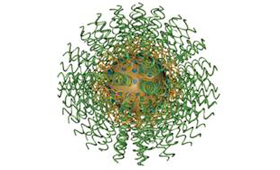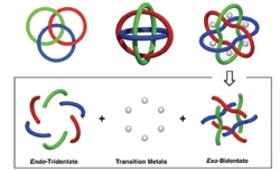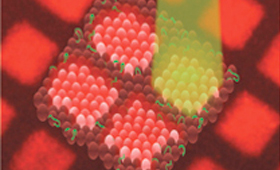Materials/Nanoscience
The faculty in the Chemistry Department at Northwestern University have diverse interests in materials science, especially as this field intersects with nanoscience and nanochemistry. Major research thrusts involve developing novel, chemically well-defined routes to advanced materials, spanning metallic, semiconducting, organic, and carbon-based nanomaterials, biomolecular, polymeric, and supramolecular structures, porous structures like metal organic and porous organic frameworks, solid-state materials, and inorganic-organic hybrids like nano-bio conjugates, and their assemblies; uncovering their new chemical and physical properties and functions through experimental and theoretical avenues and learning about how they interface with, respond to, and mimic living systems; and utilizing such materials to change paradigms in energy, catalysis, biomedicine, environmental science, and assembly.
Materials/Nanoscience Research Areas:
 Inorganic-Organic Materials
Inorganic-Organic Materials
Porous materials • solar energy • catalysis • magnetism • chemical sensors • alternative energy appliances • gas storage and separation • theory collaborations • molecular sieving membranes
Farha, Gianneschi, Hupp, Marks, Mirkin, Nguyen, Poeppelmeier, Sargent
 Nanochemistry
Nanochemistry
Diagnostics • therapeutics • photovoltaics • catalysis • patterning • electronic structure • synthesis • magnetic separation • magnetic resonance imaging • synthetically programmable lattices
Dichtel, Farha, Gianneschi, Hunter, Kanatzidis, Kelley, Marks, Meade, Mirkin, Odom, Olvera de la Cruz, Sargent, Swearer
 Solid-State Materials
Solid-State Materials
Synthetic technique development • electronic structure • theory-inspired research • solar energy • gamma ray detectors • thermoelectrics, superconductors • magnetic materials • batteries • nanostructuring • exploratory synthesis • transparent conducting oxides
Dichtel, Hunter, Kanatzidis, Poeppelmeier, Sargent
 Organic Nanotechnology & Materials
Organic Nanotechnology & Materials
Supramolecular chemistry • mechanostereochemistry • molecular recognition • self-assembly • functionalized and mechanized molecules • metal-organic frameworks and porous organic materials • artificial photosynthesis
Dichtel, Kalow, Mrksich, Malapit, Nguyen, Stupp, Wasielewski
 Physical Nanotechnology & Materials
Physical Nanotechnology & Materials
Synthesis of metal, semiconductor, and organic nanostructures, including quantum dots, plasmonic nanoparticles, carbon nanotubes, graphene, and self-assembled biomolecules • development of new photonic and energy conversion materials; non-equilibrium (stimuli-responsive) materials • molecular electronics, excited state dynamics of photoactive nanostructures • spin quantum resonance sensing • spin cluster engineering for hyperpolarization
Chen, Geiger, Han, Hunter, Kelley, Odom, Sargent, Schaller, Swearer
 Soft Matter
Soft Matter
Polymers • gels • biomaterials • soft robotics • nanoscopy • 3D printing • statistical mechanics • fluctuations
Dichtel, Gianneschi, Gingrich, Kalow, Kelley, Luijten, Marks, Mirkin, Odom, Nguyen, Olvera de la Cruz, Schatz, Stupp
